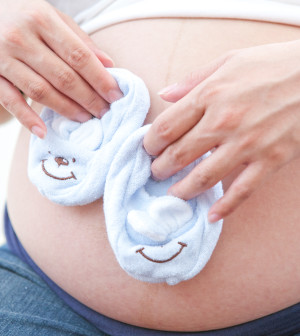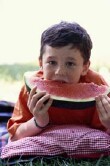- Double Mastectomy May Offer No Survival Benefit to Women With Breast Cancer
- Toxic Lead Found in Cinnamon Product, FDA Says
- Certain Abbott Blood Sugar Monitors May Give Incorrect Readings
- Athletes Can Expect High Ozone, Pollen Counts for Paris Olympics
- Fake Oxycontin Pills Widespread and Potentially Deadly: Report
- Shingles Vaccine Could Lower Dementia Risk
- Your Odds for Accidental Gun Death Rise Greatly in Certain States
- Kids From Poorer Families Less Likely to Survive Cancer
- Tough Workouts Won’t Trigger Cardiac Arrest in Folks With Long QT Syndrome
- At-Home Colon Cancer Test Can Save Lives
Protect Your Kids From the Heat


Parents need to be aware that hot weather can pose a serious threat to children and must take steps to protect their youngsters, an expert says.
In extremely hot weather, children’s play time should be restricted to early morning or late afternoon, Dr. Eric Kirkendall from Cincinnati Children’s Hospital Medical Center recommended in a medical center news release.
Parents also need to monitor children’s physical activity to make sure they don’t overexert themselves.
“Keep them well-hydrated with water, and take frequent breaks to allow them to come inside and cool off,” Kirkendall said.
Hot weather puts children at risk for three types of problems, he noted. “Heat stroke, heat exhaustion and heat cramps are reactions caused by exposure to high temperatures combined with high humidity,” Kirkendall said. “The most serious of these is heat stroke.”
Heat cramps typically occur in the abdomen and legs, especially the calf or thigh muscles. There is no fever. Symptoms of heat exhaustion include pale skin, profuse sweating, nausea, dizziness, fainting and weakness. Children with heat exhaustion require medical attention.
Symptoms of heat stroke include hot flushed skin, high fever (over 104 degrees F), confusion and other altered mental states, and seizures. This is a life-threatening emergency and 911 needs to be called immediately, Kirkendall said.
Keep the child as cool as possible while waiting for emergency crews to arrive. For example: move the child to a cool, shady place or an air-conditioned room; fan the child; sponge the child’s entire body with cool water. If the cool water makes the child shiver, stop.
If the child is awake, give him or her as much cold water as they can drink. Don’t use fever medicines, because they do nothing to treat heat stroke, Kirkendall said.
More information
The U.S. National Library of Medicine has more about heat illness.
Source: HealthDay
Copyright © 2024 HealthDay. All rights reserved.










